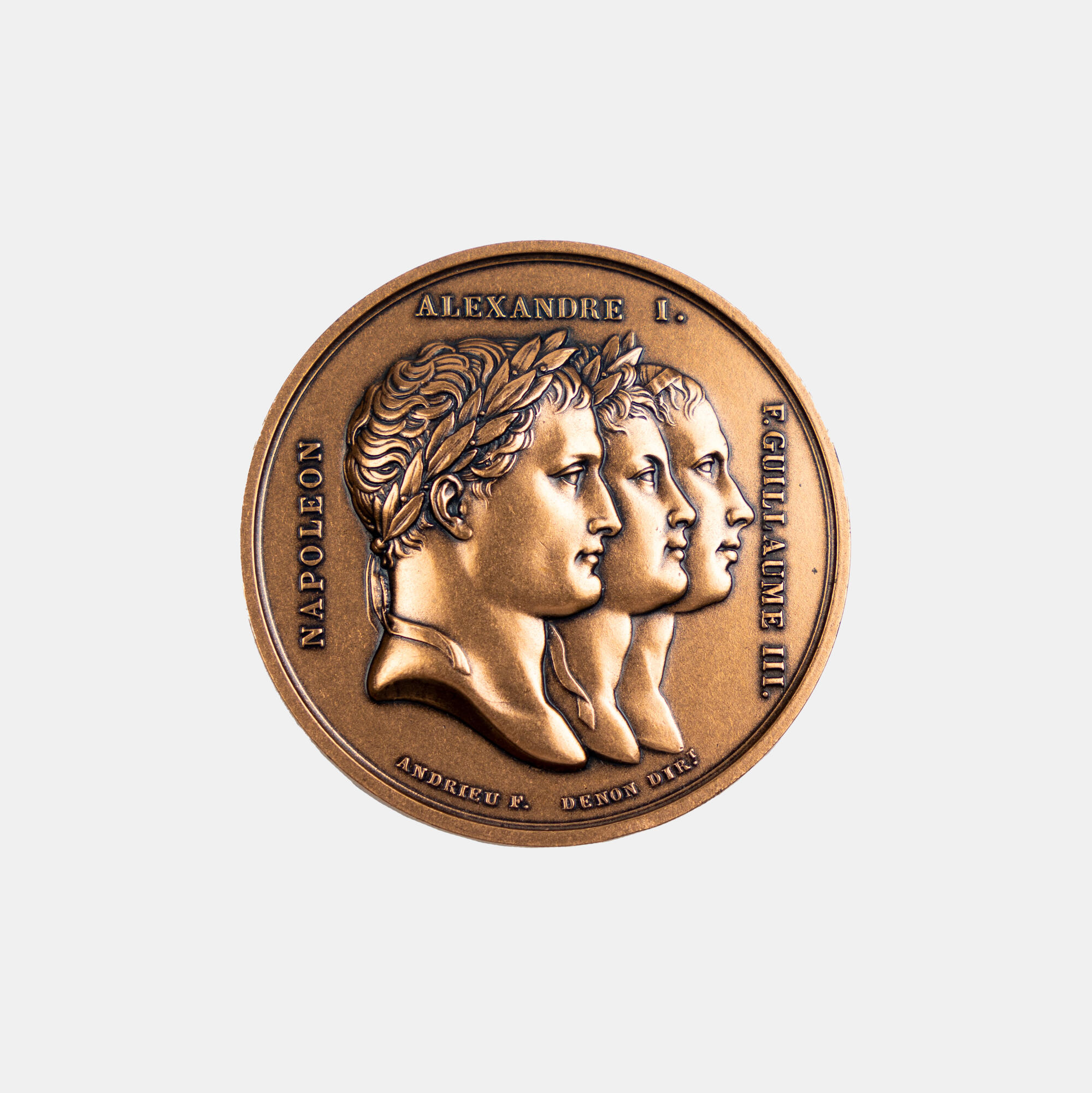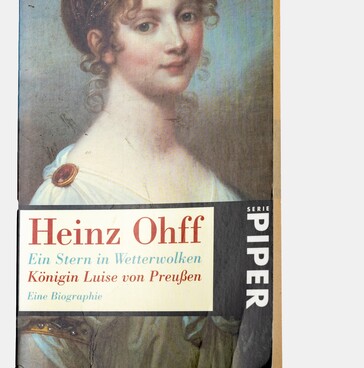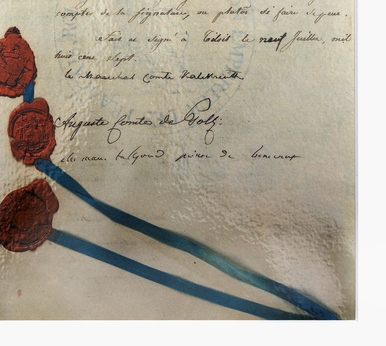On July 7, 1807, the French Emperor Napoleon I, the Russian Emperor Alexander I and the Prussian King Friedrich William III concluded a peace treaty in Tilsit. The medal dedicated to the bicentenary of the Peace Treaty of Tilsit is made of 850-standard silver, its weight is 38.55 grams.
The obverse of the medal depicts the three monarchs in the tradition of classical profile portraits. Napoleon and Alexander are crowned with laurel wreaths.
The image on the obverse of the medal most accurately conveys the whole essence of the political situation in Europe in 1807. In the foreground is Napoleon, the victor, crowned with a laurel wreath. Just behind Bonaparte is Alexander, who was formally defeated, also with a wreath of laurel leaves on his head. This detail is very eloquent and telling — despite its defeat in the war, Russia was still an influential player in the international political arena, and even the mighty Napoleon had to take this into account. But Prussia (unlike Russia) was completely and utterly devastated by Bonaparte, after which it lost all influence over the course of political affairs in Europe. Napoleon thought little of King Friedrich William of Prussia and at Tilsit he made some concessions to the Prussians only because of the insistent demands of the Russian Emperor Alexander. This explains why the French medal shows the Prussian king in the background lacking a laurel wreath.
The signing of the peace treaty
was preceded by a meeting between Napoleon I and Alexander I. The allegory on
the reverse of the medal is dedicated to this historic encounter, which took
place on 25 June 1807 on a raft in the middle of the Neman River. The Neman is
embodied here by a nude male figure with classical forms and proportions. One
hand rests on a jug from which water is poured, while the other holds a model
of the wooden pavilion where the monarchs had their negotiations. The olive
tree symbolizes peace. The composition was created in the Empire style, which
inherited the artistic language of Classicism of the preceding epoch and became the leading
trend in the art of that time.


